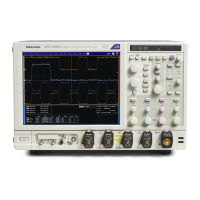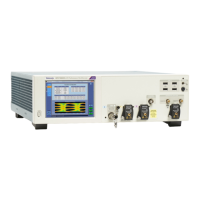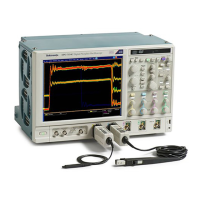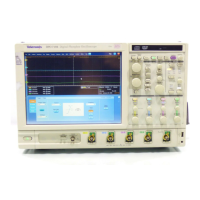Theory of Operation
This section describes the electrical operation of the instrument. The following
figures show the module interconnections. (See Figure 2-1 on page 2-4.)
Logic Conventions
The instrument contains many digital logic circuits. This manual refers to these
circuits w
ith standard logic symbols and terms. Unless otherwise stated, all logic
functions are described using the positive-logic convention: the more positive of
the two logic levels is the high (1) state,andthemorenegativelevelisthelow
(0) state. Signal states may also be described as "true" meaning their active s tate
or "false" meaning their nonactive state. The specific v oltages that constitute a
high or low state vary among the electronic devices.
Module Overviews (DPO7000 Series, DSA/DPO70000B/C Series)
Module overviews describe the basic operation of each functional circuit block.
A Microsoft Windows processor system is the primary controller of the
instrument. The instrument features an XGA resolution flat-panel display, a
trans
parent touch screen, and a front-panel with direct access to commonly used
instrument functions. You can also make complete use of the instrument with a
mouse and keyboard.
Input Signal Path
Asi
gnal enters the instrument through a connection to the input connector on
the front panel.
Acquisition Board. The acquisition board conditions the input signals and
converts them to digital signals, then processes the data into a form that is handled
by the display system. The acquisition system includes the multi-source trigger
s
ystem, a timebase, and acquisition control circuitry, as well as a calibration
reference system for internal calibration purposes. The acquisition board is
located in the bottom compartment of the instrument. All input channels feature
a probe interface system with the ability to recognize the probe type for proper
unit display and for calibration out to the probe tip.
Processor System. The processor system contains a processor board with
microprocessor that controls the entire instrument. The basic configuration
supports input channels, provides an external trigger input, a trigger output, and a
probe compensation output.
Each acquisition channel is equipped with a processor that uses its own host
interface which communicates with the command interface processor.
MSO70000/C, DSA70000B/C, DPO70000B/C, D PO7000, MSO5000, DPO5000 Series 2–1

